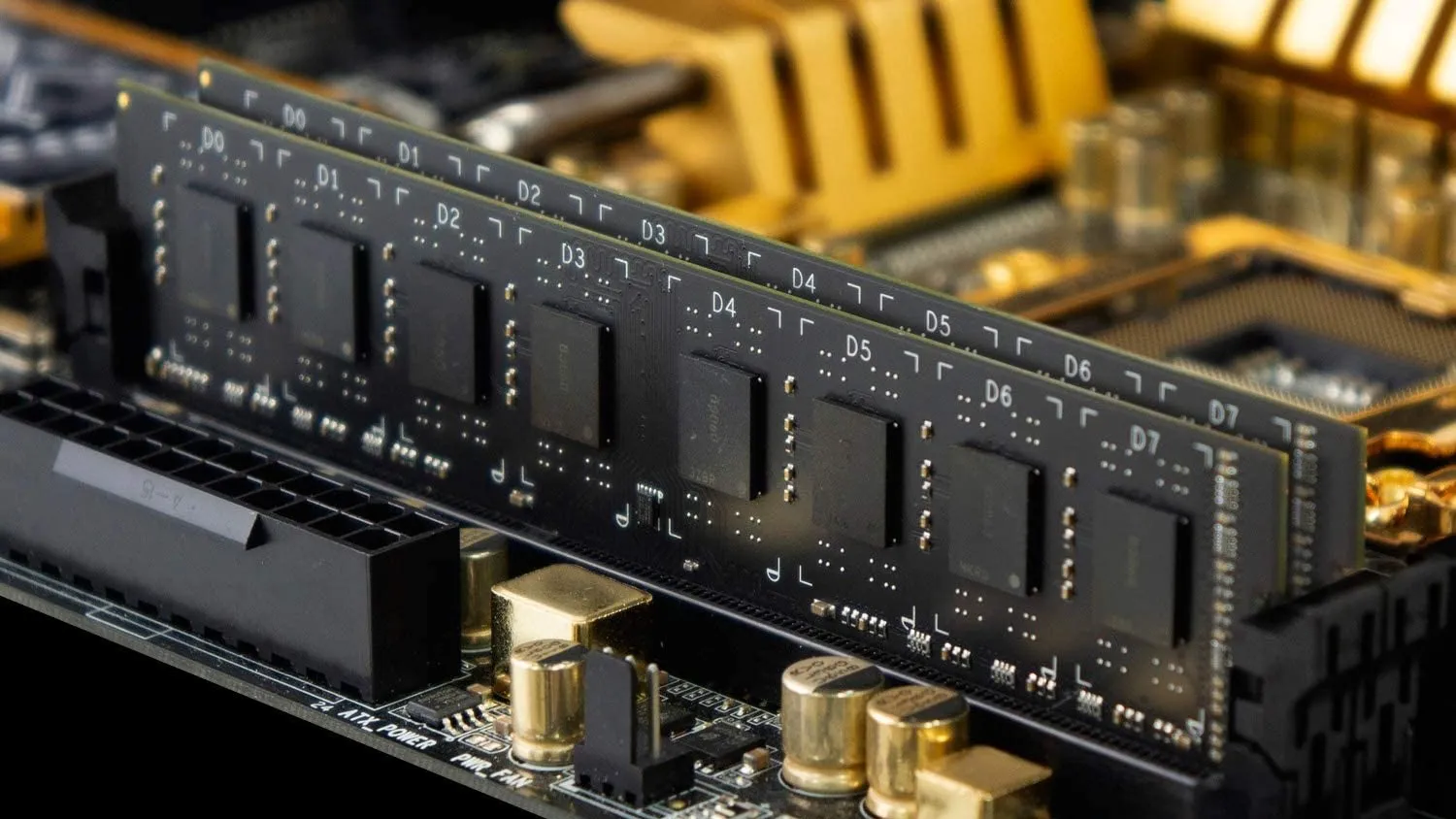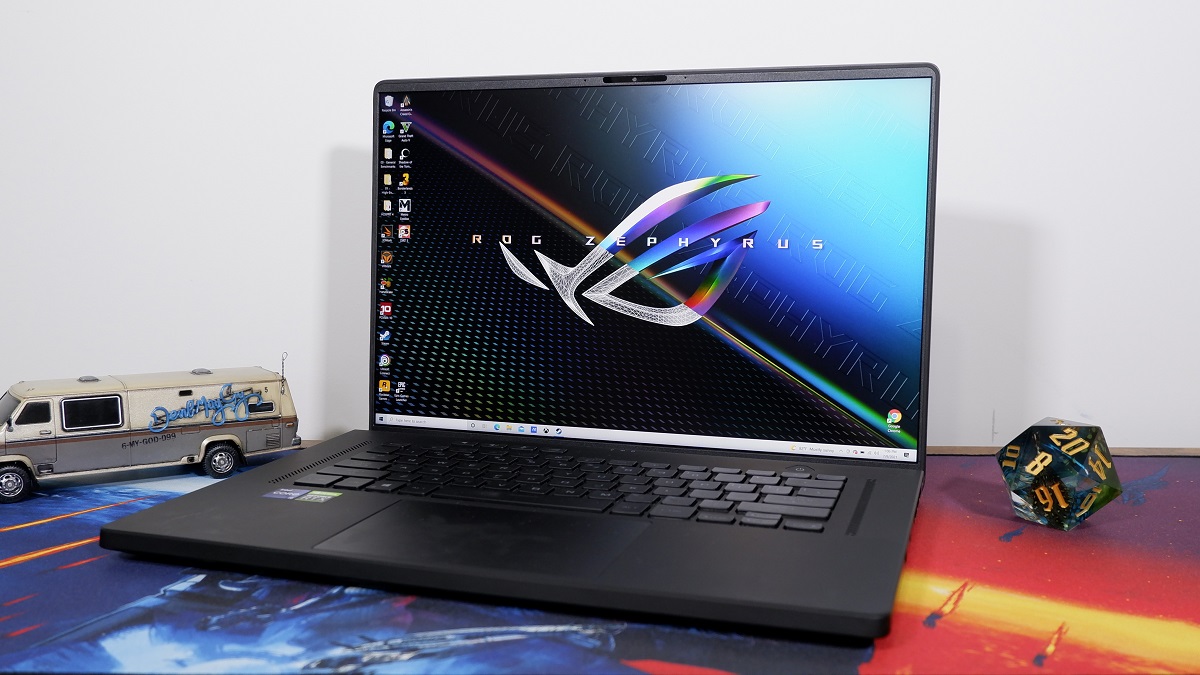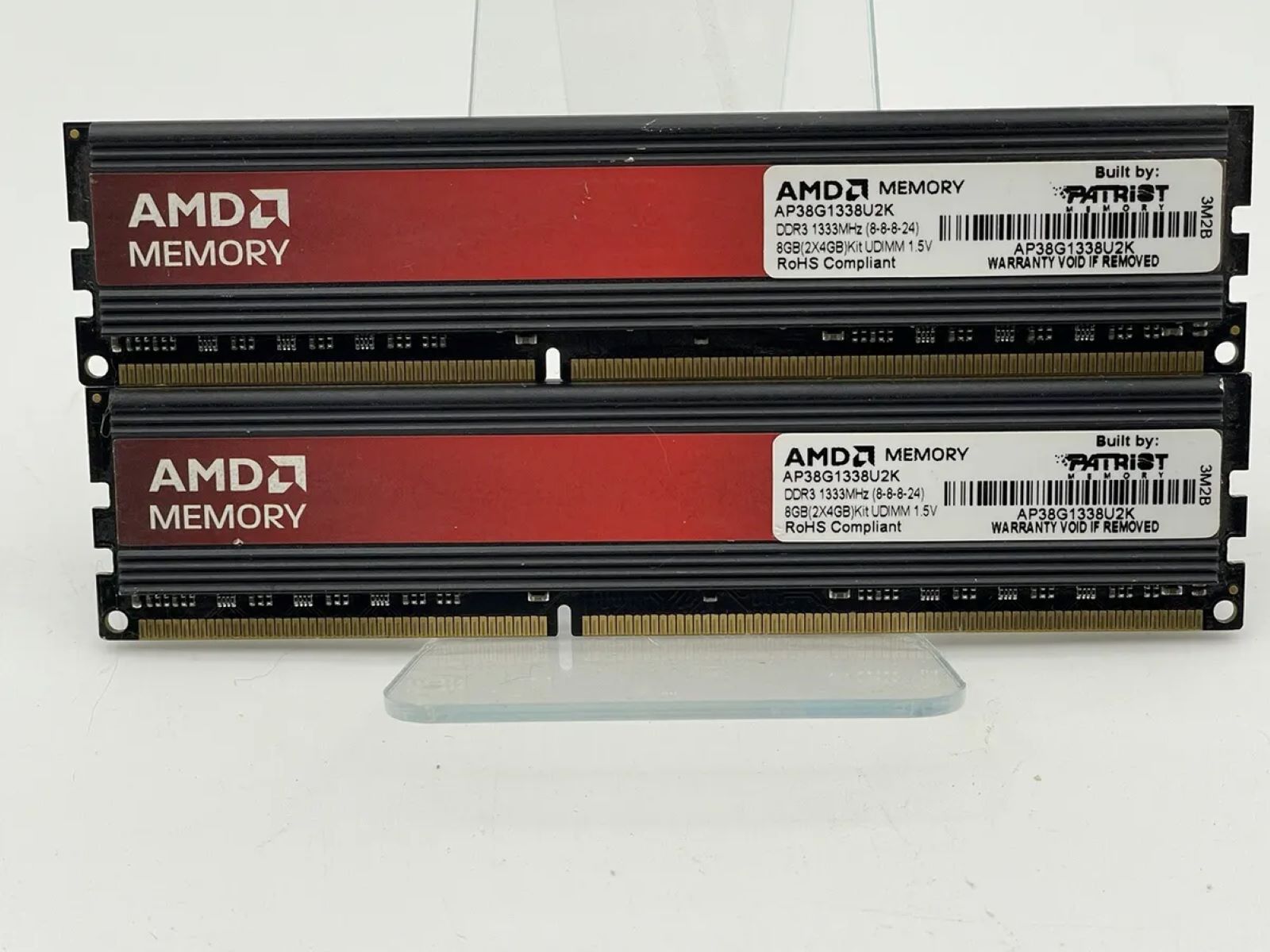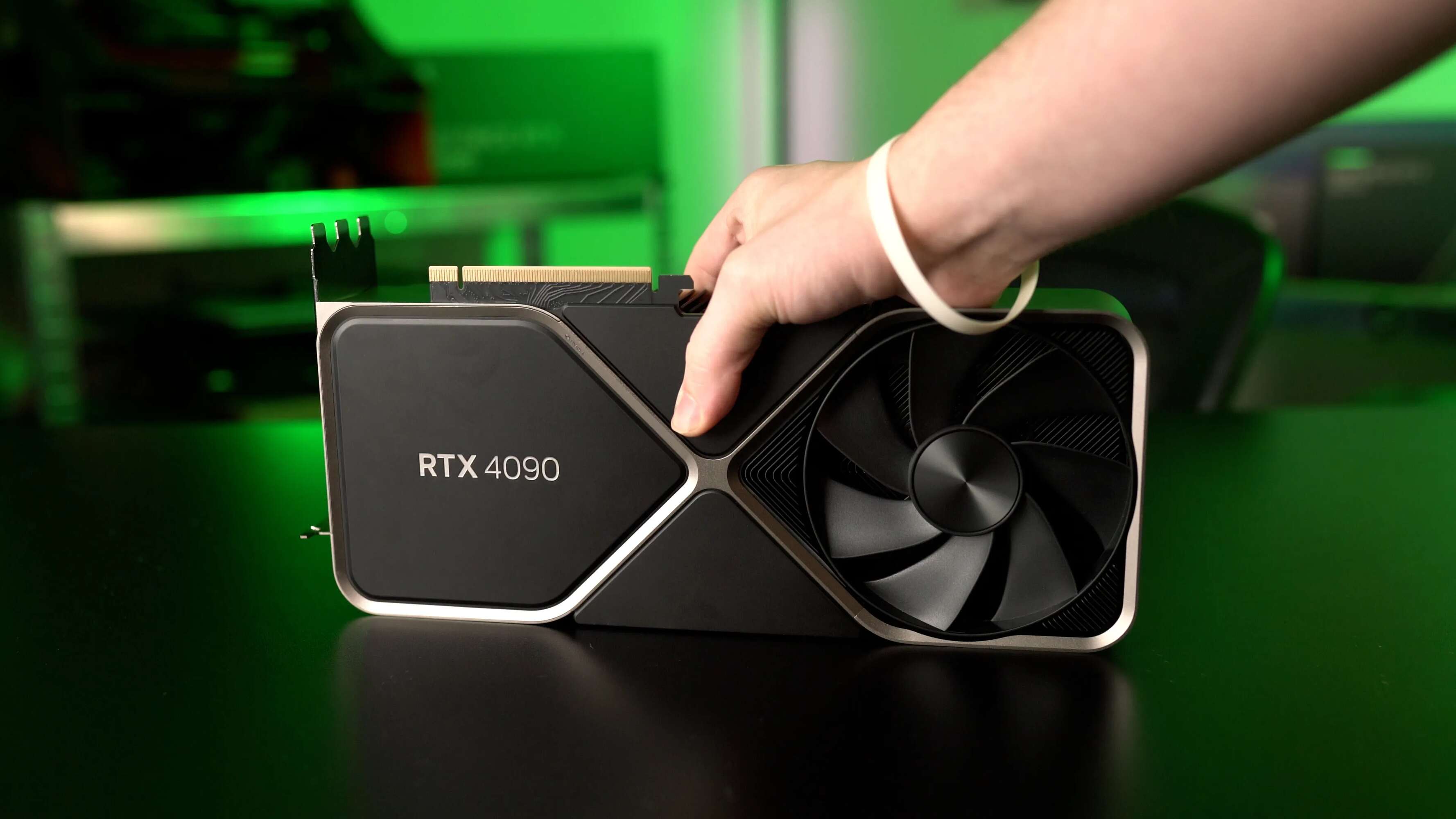Introduction
In today’s technologically advanced era, computers have become an integral part of our daily lives. Whether it’s for work, entertainment, or communication, we heavily rely on computers to perform various tasks. One crucial component that plays a vital role in the smooth functioning of a computer is RAM, which stands for Random Access Memory.
RAM acts as a temporary storage space for data and instructions that the computer’s processor needs to access quickly. It allows for faster execution of programs, smoother multitasking, and improved overall performance.
While most computers come with a certain amount of pre-installed RAM, there may be instances where more dedicated RAM is needed. This could be due to resource-intensive tasks like gaming, video editing, or running multiple virtual machines simultaneously. To meet these demands and optimize performance, it is essential to dedicate RAM specifically for such tasks.
By dedicating RAM, you allocate a certain amount of memory exclusively for a particular use, ensuring that it is not shared or utilized by other programs or processes running on your computer. This improves efficiency, reduces lag, and prevents potential conflicts or crashes.
In this article, we will explore how to dedicate RAM on Windows, Mac, and Linux operating systems, as well as discuss things to consider before allocating RAM. But before we dive into the specifics, let’s first learn how to check the available RAM on your computer.
What is RAM?
RAM, or Random Access Memory, is a crucial component of a computer that acts as a temporary storage space for data and instructions that the processor needs to access quickly. It is a form of volatile memory, meaning that its contents are lost when the computer is powered off or restarted.
When you open an application or execute a program, the required data is loaded into RAM to facilitate quick access by the processor. This enables faster execution of tasks and allows the computer to handle multiple processes simultaneously.
RAM works in collaboration with the computer’s hard drive or solid-state drive (SSD), which serves as a long-term storage for programs and files. While the hard drive stores data even when the computer is turned off, accessing data from it is much slower compared to accessing data from RAM.
RAM is measured in terms of capacity, usually in gigabytes (GB) or terabytes (TB). Higher RAM capacity allows for the smooth execution of resource-intensive applications, heavy multitasking, and faster data processing. However, it is important to note that dedicating excessive amounts of RAM beyond the requirements of your computing tasks may not result in significant performance gains.
In addition to capacity, RAM also has a clock speed, which determines how quickly data can be read from or written to the memory modules. Higher clock speeds result in faster data access and transfer, further improving overall system performance.
It’s worth mentioning that RAM is not a substitute for storage space. While it is necessary for the functioning of programs and processes, files and documents are typically stored on the computer’s hard drive or SSD. Therefore, it is important to have a balance between sufficient RAM capacity and ample storage space to ensure optimal performance and storage capabilities.
Why Dedicate RAM?
Dedicating RAM for specific tasks or applications can have a significant impact on the overall performance and efficiency of your computer. Here are a few key reasons why dedicating RAM is important:
- Improved Performance: By allocating a specific amount of RAM to a particular task or application, you ensure that it has the necessary resources to function smoothly. This helps in reducing lag, improving response time, and overall system performance.
- Enhanced Multitasking: When you dedicate RAM to resource-intensive tasks, it allows you to run multiple programs simultaneously without experiencing a significant drop in performance. This is especially beneficial for power users, such as gamers, video editors, or developers, who often work with demanding applications.
- Preventing Conflicts: In a shared RAM environment, where multiple programs are competing for resources, conflicts can arise, leading to system crashes or freezes. By dedicating RAM, you minimize the chances of conflicts occurring, ensuring a stable and reliable computing experience.
- Faster Load Times: When RAM is dedicated to specific tasks, the data required for those tasks is stored in memory, allowing for faster access and load times. This is particularly important for applications that heavily rely on data retrieval, such as video editing software or large-scale data analysis tools.
- Optimized Virtual Machine Performance: If you run virtual machines on your computer, dedicating RAM to each machine ensures that they have sufficient resources to operate efficiently. This prevents lag or slow performance within the virtual machines and allows for smooth multitasking between multiple operating systems running simultaneously.
It is important to note that dedicating RAM should be done judiciously. Allocating excessive RAM to a single task can potentially starve other processes and lead to diminished overall performance. Therefore, it is crucial to assess the requirements of the task or application and allocate RAM accordingly.
Now that we understand the importance of dedicating RAM, let’s move on to the next section, where we will learn how to check the available RAM on your computer.
How to Check Available RAM
Before you can dedicate RAM or assess how much can be allocated, it is essential to check the available RAM on your computer. Here are the steps to check your available RAM:
- Windows: On a Windows computer, you can check your available RAM by following these steps:
- Open the Task Manager by pressing “Ctrl + Shift + Esc” or by right-clicking the taskbar and selecting “Task Manager”.
- In the Task Manager window, click on the “Performance” tab.
- Select “Memory” from the options on the left-hand side.
- You will see the total amount of RAM displayed under the “Physical Memory” section. The “Available” value indicates how much RAM is currently free and can be allocated for tasks.
- Mac: To check the available RAM on a Mac, follow these instructions:
- Click on the Apple menu in the top-left corner and select “About This Mac”.
- In the window that appears, click on “Memory” or “System Report”.
- You will see the total amount of RAM displayed under the “Memory” or “Hardware” section. The “Available” value indicates how much RAM is currently free and can be dedicated for specific tasks.
- Linux: Checking available RAM on Linux can be done through the terminal by following these steps:
- Open the terminal by pressing “Ctrl + Alt + T” or searching for “terminal” in the applications menu.
- Type the command “free -h” and press Enter.
- You will see a table displaying the total, used, and available memory. The “available” column indicates how much RAM can be allocated for tasks.
By checking the available RAM, you can determine how much memory is currently free and whether you need to allocate additional RAM for specific tasks. This information will be useful when dedicating RAM on your computer, as we will explore in the next sections.
How to Allocate RAM in Windows
If you are using a Windows operating system, allocating RAM to specific tasks or applications can be done through the built-in System Configuration utility. Here are the steps to allocate RAM in Windows:
- Press the “Windows” key + “R” to open the Run dialog box.
- Type “msconfig” in the dialog box and press Enter.
- In the System Configuration window, go to the “Boot” tab.
- Click on the “Advanced options” button.
- In the Advanced options dialog box, check the box next to “Maximum memory”.
- Specify the amount of RAM you want to allocate in megabytes (MB). You can enter the exact amount or a smaller value if desired.
- Click on “OK” to save the changes.
- Restart your computer for the changes to take effect.
Once your computer restarts, the allocated RAM will be reserved for the specified task or application. It is important to note that the allocated RAM cannot be accessed or utilized by other processes or programs running on your computer.
Keep in mind that allocating excessive RAM to a single task or application may result in limited resources available for other processes, potentially impacting overall performance. Therefore, it is recommended to allocate an appropriate amount of RAM based on the specific requirements of the task or application.
Now that you know how to allocate RAM in Windows, let’s move on to the next section where we will explore how to allocate RAM in Mac.
How to Allocate RAM in Mac
If you are using a Mac computer, allocating RAM to specific tasks or applications can be done through the Activity Monitor utility. Here are the steps to allocate RAM in Mac:
- Open the “Finder” application from the dock.
- Go to the “Applications” folder.
- Open the “Utilities” folder.
- Double-click on the “Activity Monitor” application.
- In the Activity Monitor window, click on the “Memory” tab.
- You will see a list of active processes and their corresponding memory usage.
- Locate the task or application for which you want to allocate RAM.
- Right-click on the task or application and select “Get Info”.
- In the Get Info window, click on the “Memory” tab.
- Specify the amount of RAM you want to allocate in the “Preferred Size” field.
- Click on “OK” to save the changes.
After allocating RAM to a specific task or application, the reserved memory will be dedicated to that particular process. It will not be shared or utilized by other programs or processes running on your Mac.
Remember to allocate an appropriate amount of RAM based on the requirements of the task or application. Allocating excessive RAM may limit resources available to other processes and impact overall system performance.
Now that you know how to allocate RAM in Mac, let’s move on to the next section where we will explore how to allocate RAM in Linux.
How to Allocate RAM in Linux
If you are using a Linux operating system, you can allocate RAM to specific tasks or applications by adjusting the limits in the control groups (cgroups) feature. Here are the steps to allocate RAM in Linux:
- Open a terminal by pressing “Ctrl + Alt + T” or searching for “terminal” in the applications menu.
- Type the following command and press Enter to open the cgroups configuration file:
sudo nano /sys/fs/cgroup/memory/memory.limit_in_bytes - Specify the amount of RAM you want to allocate by entering the value in bytes. For example, if you want to allocate 2 gigabytes (GB) of RAM, enter “2G”.
- Press “Ctrl + X” to exit nano, and then press “Y” to save the changes.
- Restart the computer for the changes to take effect.
Once your computer restarts, the specified amount of RAM will be allocated to the tasks or applications within the configured control group. This ensures that the allocated memory is reserved exclusively for those processes and not shared with others.
It is important to allocate an appropriate amount of RAM based on the specific needs of the task or application. Allocating too much RAM may limit the resources available to other processes, potentially impacting overall system performance.
Now that you know how to allocate RAM in Linux, you can optimize the performance of specific tasks or applications based on your requirements.
Things to Consider Before Allocating RAM
Before you allocate RAM to specific tasks or applications, there are a few important factors to consider. Here are some things to keep in mind:
- System Requirements: Ensure that your computer meets the recommended system requirements for the task or application you want to allocate RAM to. Allocating more RAM than necessary may not yield significant performance improvements, so it’s important to assess the requirements beforehand.
- Available RAM: Check the amount of available RAM on your computer before allocating additional memory. Subtract the allocated RAM from the total installed RAM to determine the amount that can be allocated without impacting other processes or system performance.
- Task Priority: Consider the priority of the task or application you are allocating RAM to. If it requires a significant amount of memory and is crucial for your work or enjoyment, allocating more RAM might be beneficial.
- Multi-Tasking Requirements: Take into account the extent of multi-tasking you typically engage in. If you frequently work with multiple resource-intensive applications simultaneously, allocating more RAM may help maintain smooth performance across all tasks.
- Background Processes: Be aware of any background processes or applications running on your computer that may also require RAM. Allocating too much RAM to a specific task may starve other processes, resulting in decreased performance in those areas.
- Regular Monitoring: Keep an eye on the performance of your computer after allocating RAM. If you notice any issues, such as excessive lag, reduced responsiveness, or crashes, it may be necessary to adjust the allocated RAM or optimize system settings.
It’s important to strike a balance when allocating RAM, ensuring that the allocated memory meets the requirements of the task or application without negatively impacting the overall system performance or other running processes.
By considering these factors, you can make informed decisions when allocating RAM and optimize the performance of your computer for specific tasks or applications.
Conclusion
Allocating RAM for specific tasks or applications can significantly enhance the performance and efficiency of your computer. By dedicating memory to resource-intensive processes, you ensure that they have the necessary resources to run smoothly without being impacted by other programs.
In this article, we explored the importance of RAM and why dedicating it is beneficial. We discussed how to check the available RAM on Windows, Mac, and Linux, and provided step-by-step instructions on how to allocate RAM in each operating system.
Before allocating RAM, it is essential to consider factors such as system requirements, available RAM, task priority, multi-tasking needs, and background processes. Striking the right balance ensures optimal performance and prevents potential conflicts between processes.
Regular monitoring and fine-tuning may be necessary to maintain an optimal allocation of RAM based on changing requirements and usage patterns. By staying attentive to your computer’s performance, you can make adjustments as needed to ensure smooth and efficient operation.
Remember, the allocation of RAM should be done judiciously, with consideration given to the specific needs of the task or application. Allocating excessive RAM may limit resources available to other processes and could potentially impact overall system performance.
By following the guidelines and instructions provided in this article, you can allocate RAM effectively and enhance your computer’s ability to handle resource-intensive tasks, improve multitasking capabilities, and provide a smoother computing experience overall.

























